10 years on from Halifax Town's last stand
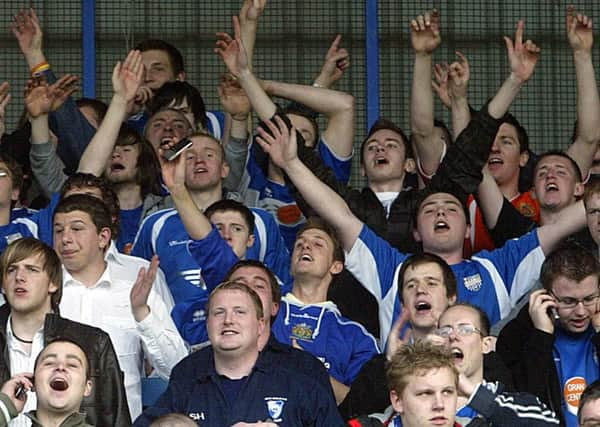

On the pitch, manager Chris Wilder had performed a minor miracle by overcoming a 10-point deduction to secure safety by one point. But off the pitch, just days later, there was a bigger battle for Town’s existence, resulting in the club folding three years shy of its centenary.
Financial problems were nothing new at The Shay. Relegation from the Football League for the first time in the club’s history in 1993 had coincided with the club experiencing off-the-field problems.
Advertisement
Hide AdAdvertisement
Hide AdThen, in 2002, the club was placed into administration after being relegated again but was saved from the threat of liquidation by 10 local businessmen and help from the club’s supporters trust.
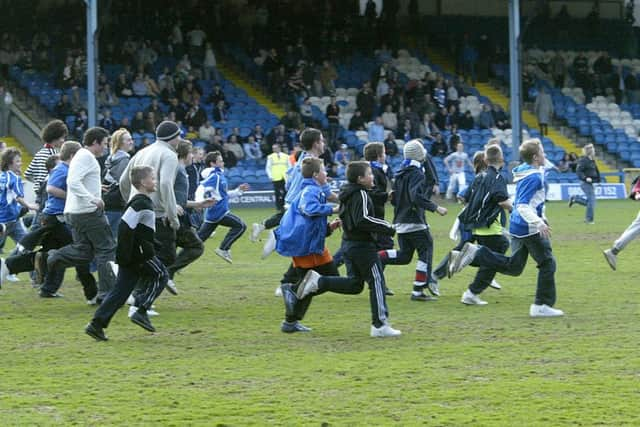

The club was saddled with a Company Voluntary Agreement (CVA), but while this was eventually mostly paid off, other debts mounted.
Chris Wilder performed wonders with a limited budget, guiding the club to the Conference play-off final in 2006.
“The local businessmen were the lifeblood of the club,” says Wilder, now manager of Sheffield United. “Ten of them had put £10,000 each into it to keep it afloat.
Advertisement
Hide AdAdvertisement
Hide Ad“I knew what the situation was. When the club came out of the Football League it had been close to not existing, there was no equipment, no training ground and the situation with the new stand hadn’t been resolved.
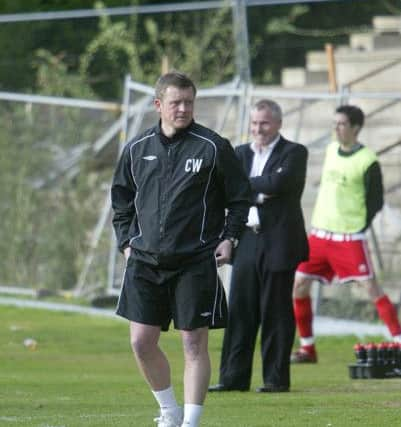

“But all we tried to do was keep the club going for the players already there, the young players coming through and the supporters.
“It was a massive struggle for the club to find the money to pay the wages to be competitive, so we used a lot of local boys released by other clubs, with the senior pros already there.
“There were a lot of times when people didn’t get paid, but there was never anything sinister about it.
Advertisement
Hide AdAdvertisement
Hide Ad“But I don’t think it was inevitable that the club would fold.”
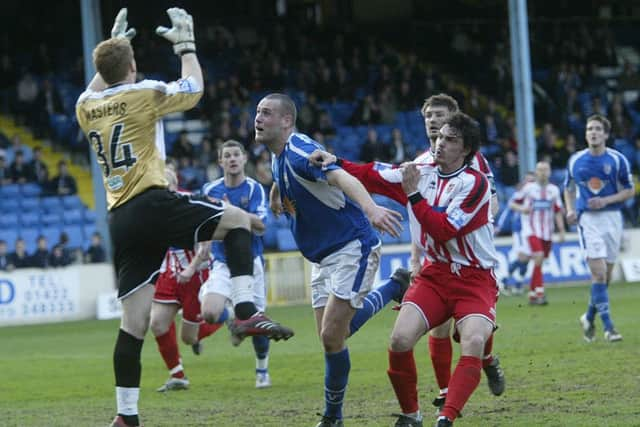

Then-general manager Angie Firth recalls: “The board at that time worked hard and did what they could, but they were normal working men, not exceptionally wealthy and certainly not millionaires.
“The only income was from gate receipts, we generated little or no commercial income.
“They were difficult times. The prime focus was trying to generate enough income to cover the wages for the following month.
Advertisement
Hide AdAdvertisement
Hide Ad“We tried hard to keep things as calm as possible so as not to upset the playing side. We never really expected to go bust but the possibility of a 10 point deduction was always looming and to that end we needed the team to do well.
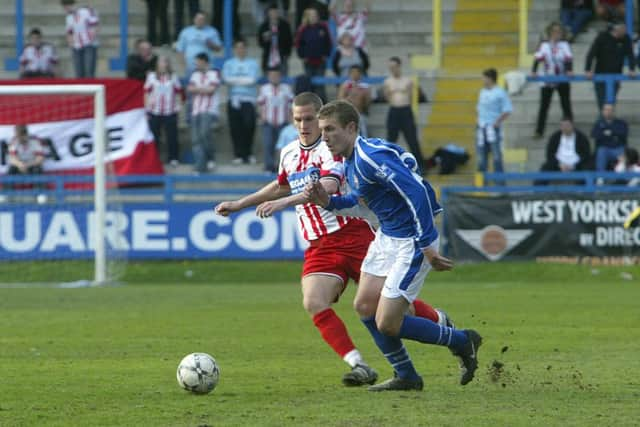

“And they did, they dug-in and kept us safe points wise. The supporters club and members of the Trust were a great help raising funds however they could. The volunteers who manned the shop, worked a turnstile and did the daily running around to keep the club ticking over.
“Some other individuals parted with their hard earned cash to help out when the going got really tough and professionals did a lot of work to help the club at no cost.
“We only spent money on necessities, such as medical kit for the physio. It was far from easy.”
Advertisement
Hide AdAdvertisement
Hide AdThen chairman Geoff Ralph says: “Chris Wilder did a brilliant job throughout that period. He was working with reasonable players at that level but he was getting the best out of them. We didn’t have a Jamie Vardy or a Geoff Horsfield - we just had a lot of really good, workmanlike players.
“Who knows where we might have been today if we’d won that play-off game.”
For more than a year before the club folded, a consortium of businessmen - David Bosomworth, Bobby Ham and Stuart Peacock - had been pumping money into the club’s dwindling coffers.
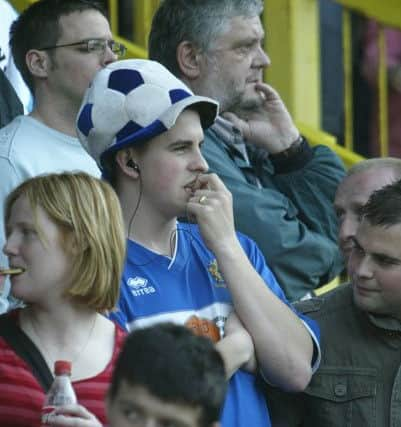

“I got involved in 2005,” says Ralph, “at which time there was a commitment from the board that the club was going to be full-time and try to get back in the Football League.
Advertisement
Hide AdAdvertisement
Hide Ad“The previous chairman had resigned so it was a bit of a rudderless ship. I said I’d have a go and let’s see how we get on.
“Obviously we got in the play-off final in 2006. But before that I’d been saying I couldn’t continue to fund the club on my own and I was looking for investors to come on board or take the club over.
“There were three options - a guy called Mark Rushton, who came to a few matches and was quite keen, the Supporters Alliance, who were interested in ourselves and Ebbsfleet, and the consortium.
“At that time, it was felt the consortium’s offer was the best deal on the table.
Advertisement
Hide AdAdvertisement
Hide Ad“They were going to take over, sort out the debt and have a substantial investment to give it a big push to get in the Football League.
“Their offer was subject to Conference status being maintained and the playing staff and manager in tact, subject to the outstanding loan they had made to me being repaid and subject to the normal legal and accounting process.”
The Yorkshire Evening Post reported in August 2007 that the consortium had spent nearly £200,000 on transfer fees, wages, equipment, a pre-season trip to Scotland and other costs.
Ralph says he re-mortgaged his house at one stage to pay off a loan to the club from the consortium.
Advertisement
Hide AdAdvertisement
Hide Ad“The consortium called a meeting at a nightclub in Halifax in 2007 and said they would invest in the club,” Ralph says.
“If you speak to people at that meeting I’m sure they’d say it sounded great and it would be a new start for the club.
“In my heart of hearts, I tried my level best to get all the ducks in a row for the consortium to take over. But for whatever reason, it never happened.
“If I’m honest I probably lost the plot a bit at one stage. Because I was in financial difficulties I had other things to think about.
Advertisement
Hide AdAdvertisement
Hide Ad“Things went on and on, until I got a phone call asking if I could come to a solicitor’s office in Leeds to talk about the future of the club.
“I thought ‘oh, it’s finally going to happen’, but I got there and they said ‘things are getting to the point where we want to put the club into administration, but you have to do it’ because I was the only director.
“So stupidly, I said ‘just get on with it’. The Inland Revenue put a (winding-up) petition against the club, but I think that ended up being deferred.
“But eventually it got to the point where the Inland Revenue weren’t going to accept the proposal from the administrators paying certain value to the creditors.
Advertisement
Hide AdAdvertisement
Hide Ad“If all the other creditors said yes, it didn’t matter. In those days, if the Inland Revenue said no, there was nothing you could do. So the club folded.”
The levels of debt had scuppered the consortium’s plan to acquire 75 per cent of the club, so instead they placed Town into administration for the second time in six years in order to settle the club’s debts.
“We started the last season really well,” recalls Wilder. “We were up against some powerful clubs.
“David (Bosomworth) told me when we were just outside the play-offs that the financial situation could be resolved if we went into administration again.
Advertisement
Hide AdAdvertisement
Hide Ad“But that would mean we’d lose 10 points. That wrecked our season, and people told me about the psychological impact it could have on the team, but I was prepared to do that for the long-term future of the club.”
“That was a shock,” says then striker Jon Shaw, now with South Shields, of the club going into administration. “We’d started talking about a new contract for me and the club seemed happy about it.
“Something like brings a squad closer together, and it was a great bunch of lads. We took it on the chin and went about trying to stay up.
“Chris shouldered most of the worry and kept it away from us. Once it got to the business end of the season, David (Bosomworth) informed us a bit about what was going on.
Advertisement
Hide AdAdvertisement
Hide Ad“But they did well as a club to keep that away from the players. We still got paid every month and they still looked after us. We’d started well and we were on the fringes of the play-offs at one point but then we had the points deduction and things took a turn for the worse. It went right to the wire and we got beaten by Stevenage, but thankfully Altrincham did us favour, although we were waiting 10 or 15 minutes after the final whistle for their result.
“It was an amazing high for us to stay up.”
Highs don’t have a habit of lasting long at Halifax Town.
At a meeting at The Shay on Wednesday, May 7, creditors rejected an offer of 2.5p in the pound to settle the club’s debts, and instead demanded a minimum of 10p.
Two days later, Ralph, general manager Angie Firth, commercial manager Andrew Pinfield and advisor Chris Yewdall were present at another creditor’s meeting, when the final nail was hammered into the club’s coffin - less than two weeks after Town’s great escape from relegation.
At the Leeds offices of administrators Begbies Traynor on Friday, May 9, it was revealed that the amount owed to the tax man had been miscalculated and was in fact £814,000 rather than the original figure of £500,000.
Advertisement
Hide AdAdvertisement
Hide AdThat meant HM Revenue and Customs were owed enough money so that they held the whip hand.
So when they refused to accept nothing less than 100 per cent of what they were owed, all hopes of an agreement were lost, leading the administrators to describe Town’s debts as “insurmountable”.
“After all we’d been through, I just felt gutted,” says Ralph “But I was trying to rebuild things on a personal level at that time, so effectively I just had to walk away from it.
“I was upset. We all were, but at that stage there was very little we could do about it, and none of us had the wherewithal to sort it out.
Advertisement
Hide AdAdvertisement
Hide Ad“Begbies Traynor did make the Inland Revenue an offer but they didn’t accept it, so I think they had it in their minds that they were going to make an example of Halifax Town.
“I was still hopeful the club would continue but it was out of my hands, it was up to the consortium, but it was out of their hands too really because it was up to the Inland Revenue.
“I don’t think it was inevitable. I think it was always going to be difficult, but I thought we’d seen a way through it with the consortium.
“The club had been in debt for donkey’s years, and at that time, the Inland Revenue was out to make a point about football clubs and their finances. Unfortunately, we went to the head of the queue.”
Advertisement
Hide AdAdvertisement
Hide Ad“It was a massive shock,” says Wilder. “I only knew on the day the club folded.
“I kept it from the players that there was a meeting and I was told the club would come through the CVA and everything would be resolved.
“We’d survived on the last day of the season, which was incredibly emotional, nerve racking and very tough.
“Then on the same day as the big meeting we were at the club and I remember speaking with (general manager) Angie Firth and she was saying we’ll get a decision soon and hopefully it will be OK, so we all went to the pub for a pint, came back and the club had got a call to say an agreement hadn’t been reached.
Advertisement
Hide AdAdvertisement
Hide Ad“All the contracts apart from mine, Adam Quinn’s and Jon Shaw’s were made null and void. I felt so sorry for the people that had worked there all those years and for the supporters that had followed the club through thick and thin.
“I don’t think there was too much bitterness or anger, just a real sense of sadness for everyone that had worked so hard and most importantly for the supporters.”
Angie Firth witnessed the club’s final moments in person: “The administrators were on the phone to HMRC awaiting a final figure and it was hoped a further time to pay agreement could then be reached.
“Then the news came through, the figure was a lot larger than anyone expected and there was no further time given. Bump, gone, they pulled the plug. I was absolutely gutted. In bits. We all were.”
Advertisement
Hide AdAdvertisement
Hide Ad“We were at the club when we heard,” recalls Shaw. “We were in the changing room and Chris Wilder told us.
“As soon as it happens you think ‘well, what’s going to happen now?’
“Chris was really good with us and said he’d help everybody in any way he could.
“As players you know you can find another club at some level, but the staff were really worried what it meant for them.”
Advertisement
Hide AdAdvertisement
Hide AdDefender Adam Quinn, now an electrical contractor in Sheffield, says: “Even when we got told, it didn’t feel real, it still felt like we’d get a phone call a week later saying it had all been sorted
“It came as a shock to everyone. We were all so delighted we’d managed to stay up. We all came into the club thinking we’d be having individual meetings with the manager about our futures. We knew the club had financial issues but it didn’t affect us on the pitch. When David Bosomworth came on board we thought it would all get sorted.”
The litany of debtors gives an insight into the club’s precarious finances, with schools, clothing companies and hotels left out of pocket as well as Lloyds Bank, who were owed £75,000, the FA, the Football Trust, West Yorkshire Police and St John’s Ambulance.
“I do genuinely feel sorry for all those people who didn’t get paid what they were owed,” says Angie Firth, “and appreciate the upset it would’ve caused them.
Advertisement
Hide AdAdvertisement
Hide Ad“But the people trying to save the club weren’t those who had benefited from any services or goods provided in previous years that had not been paid for. And the club had no money, only increasing debts.”
Peter Sergant, who was a partner at Begbies Traynor at the time, says: “The club wasn’t generating sufficient income to pay its bills. It had already gone into one CVA which crashed and burned.
“They needed to have a second go but when HMRC would have seen those proposals and it said they were owed half-a-million pounds, they would have thought ‘hang on a minute, this isn’t right, we’re owed £800,000’ so any credibility is blown completely.
“The other aspect of that is needing a second CVA. Someone might make a mistake and put things right but if it happens again you’re not going to trust them.
Advertisement
Hide AdAdvertisement
Hide Ad“The only way HMRC would have accepted it was if they got 100p in the pound and they knew that wouldn’t happen.
“I think it was an inevitability it would fold. The only way it could have survived is some very rich sugar daddy coming along and paying everyone off, and you’d have to be insane to do that because you’d never see it again.
“Unless someone was prepared to throw a crazy amount of money at it, it would have never worked.
“To re-establish the credibility of the club they’d have had to pay all the creditors off and that was never going to happen.
Advertisement
Hide AdAdvertisement
Hide Ad“You’re talking over a million pounds just to get it back to square one, then you’ve got to chuck another few million pounds at it to make it a success in the future.”
Ralph says: “If I had my time over again, during the close season after the play-off final, if I couldn’t have closed that deal within two or three months, I should have put the club into administration and I would have made it a part-time club.
“I stayed on as long as I did because I hoped I’d be able to salvage something for the fans.
“I had meeting after meeting with the supporters’ club but it just wasn’t to be.
“You can run from the tax man but you can’t hide from him.”
Advertisement
Hide AdAdvertisement
Hide Ad“If it had been any other business I would have told them to put it into liquidation and start again,” adds Sergant.
“You wouldn’t have even said ‘try to do a CVA’. They were completely bust and had no assets other than a few players with a small re-sale value and some equipment. The asset value of the club was negligible, yet they have all these liabilities.
“They tried to do a CVA to keep it going, which is a natural reaction to it.
“But the obvious answer is to fold it and start afresh. If that means starting in the lower league, so be it, but the important thing is to learn your lessons and not let it happen again.”
Advertisement
Hide AdAdvertisement
Hide Ad“The cause was undoubtedly the size of the debt to HMRC,” says Angie Firth, “which was far more than had ever been advised.
“The consortium had spent months propping up the club financially trying to save it. All through that morning in Leeds, David (Bosomworth) was on the phone, trying to talk to people, provide additional documentation, whatever was needed. But it was to no avail. We’d used up all our life-lines with HMRC. If an agreement could have been reached I have no doubt the consortium would’ve signed up and honoured that plan.
“But the debt had just got too big.”
The consortium appealed to the Football Association over the club’s expulsion and hopes were raised of a reprieve. But on June 11 the appeal was rejected.
Halifax Town, 1911-2008.
In next week’s Courier - Part Two: How the new club was formed.